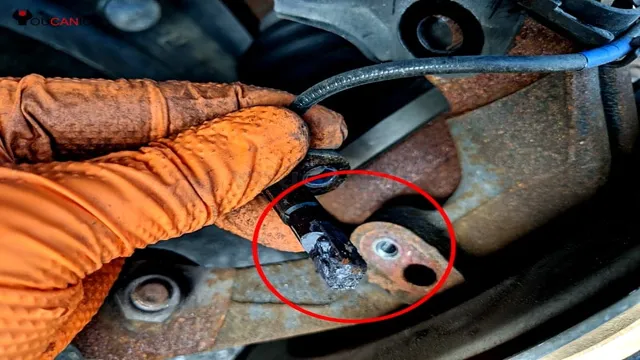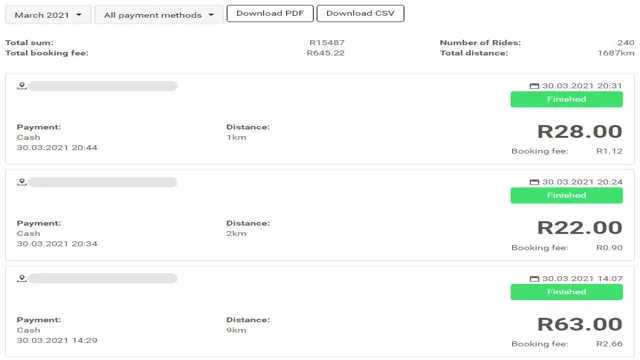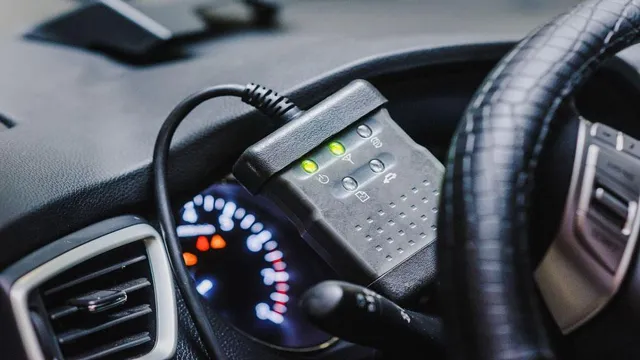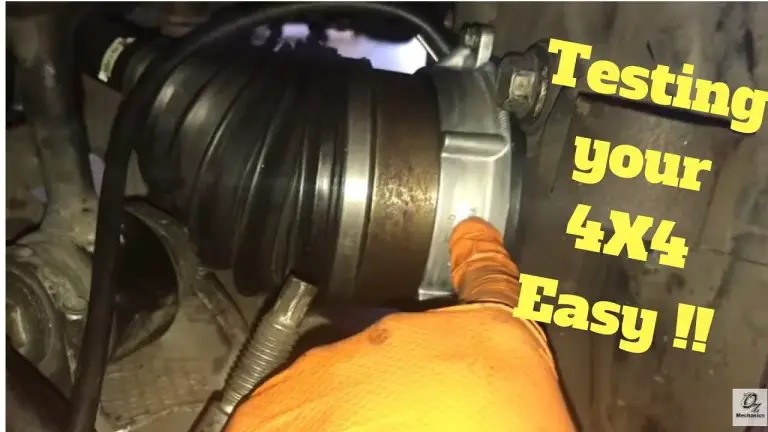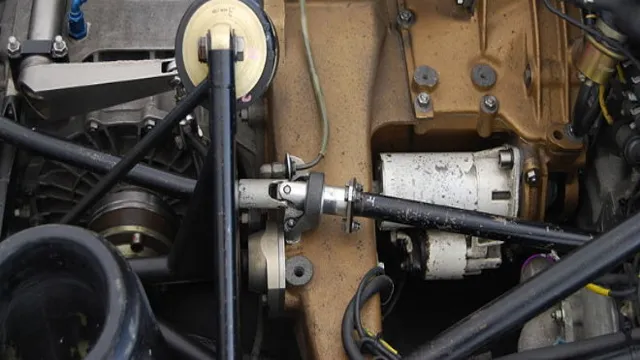Revive Your Engine’s Performance: Ultimate Guide on Fixing a Bad Fuel Pressure Regulator
Do you find yourself dealing with frequent engine stalling or low fuel economy? Well, these are potential signs of a failing fuel pressure regulator. While this small component of your vehicle’s fuel system may seem insignificant, it plays a crucial role in ensuring that the engine receives the right amount of fuel. A bad fuel pressure regulator can cause your car to run inefficiently or fail to run altogether.
As such, you must learn how to identify a faulty fuel pressure regulator and fix the problem before it becomes a repair nightmare. Keep reading to discover how to fix a bad fuel pressure regulator and get your car running smoothly again.
Diagnosis
If you’re experiencing issues with your vehicle’s fuel pressure, the culprit could be a bad fuel pressure regulator. Symptoms of a malfunctioning regulator include low fuel pressure, engine misfires, and reduced fuel efficiency. To diagnose the problem, you can use a fuel pressure gauge to test the pressure in your fuel system.
If the pressure is lower than what’s recommended for your vehicle, the regulator may need to be replaced. To fix it, you’ll need to locate the regulator in your engine and replace it with a new one. It’s also important to check the vacuum hose connected to the regulator, as leaks can cause pressure issues.
Overall, fixing a bad fuel pressure regulator is a straightforward process that can improve the performance of your vehicle and save you money on gas. So, if you suspect you have an issue with your fuel system, don’t hesitate to address it promptly.
Symptoms of a bad regulator
A bad regulator in your vehicle can cause a range of issues that affect your driving experience. Knowing the symptoms of a bad regulator can help diagnose any problems you may be experiencing. One common symptom is flickering or dimming headlights, which indicates a problem with the alternator.
Another sign is a dead battery, which happens when the regulator fails to properly charge the battery. Additionally, a bad regulator can cause erratic behavior in the dashboard gauges or even lead to engine stalling or overheating. If you suspect you have a bad regulator, it’s important to have a professional mechanic diagnose and fix the problem before it results in more serious damage to your vehicle.
By being attentive to the symptoms of a bad regulator, you can keep your vehicle running smoothly and safely on the road.
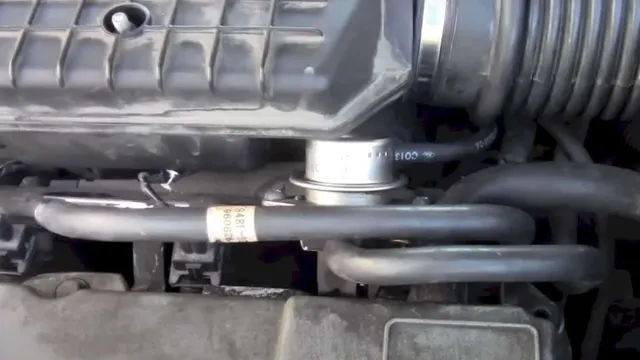
Testing fuel pressure
When diagnosing issues with your vehicle’s fuel system, one essential thing to check is the fuel pressure. Low fuel pressure can cause various issues, such as engine misfires, stalling, and poor performance. To test the fuel pressure, you will need a fuel pressure gauge and the specifications for your vehicle’s make and model.
Start by locating the fuel pressure test port on the fuel rail and attaching the gauge. Then, turn on the ignition without starting the engine to allow the fuel pump to pressurize the system. Check the gauge reading against the specifications and look for any indications of fluctuation or drops.
If the pressure is too low, the fuel pump or fuel pressure regulator may be the culprit. On the other hand, if the pressure is too high, it could indicate a clogged fuel return line or a malfunctioning pressure regulator. Testing the fuel pressure is a crucial step in diagnosing fuel system issues, and it’s vital to make sure everything is functioning correctly to improve your vehicle’s overall performance and prevent further problems from arising.
Tools & Parts
If you’re experiencing poor fuel efficiency or your engine is running rough, it may be due to a bad fuel pressure regulator. Luckily, fixing it doesn’t have to be intimidating! First, it’s important to have the right tools and parts on hand. You’ll need a fuel pressure tester, a new regulator (make sure it’s the correct one for your make and model), and fuel line disconnect tools.
Once you have these, you can get started on the repair. Begin by depressurizing the fuel system, then remove the old regulator and install the new one. Finally, run the engine and check for proper fuel pressure.
With these simple steps, you can get your vehicle running smoothly again and enjoy better fuel economy. Don’t let a bad fuel pressure regulator get you down – with the right tools and a little know-how, you can tackle this repair like a pro!
Required tools
When it comes to DIY projects, having the right tools and parts is essential for success. Whether you’re a seasoned pro or a beginner, there are a few key items you’ll need to get started. Firstly, a set of screwdrivers in various sizes will come in handy for nearly every project.
You’ll also want a pair of pliers for bending and twisting wires, as well as a tape measure for accurate measurements. A hammer and a set of various sized nails and screws will also be needed for securing parts together. Other helpful tools to have on hand include a level, a utility knife, and a drill with different drill bits.
Additionally, it’s important to have the proper parts for your project, such as brackets, hinges, and connectors. Having the right tools and parts can make all the difference in the success of your DIY project, so it’s always best to be prepared.
Replacement parts
When it comes to repairing or maintaining your tools, having access to the right replacement parts is essential. Whether you are a professional contractor or a DIY enthusiast, having a reliable source of tools and parts can save you time and money in the long run. From power tool batteries to replacement blades and bits, there are a variety of parts that may need replacing over time.
It’s always a good idea to stock up on these items in advance so that you’re not caught off guard when you need them. Plus, by replacing worn out or damaged parts, you can extend the life of your tools and ensure that they are working at their best. So, the next time you need replacement parts for your tools or equipment, be sure to find a reputable supplier that offers quality products at affordable prices.
Your tools will thank you for it!
Replacement
If you’re having issues with your vehicle’s fuel pressure regulator, don’t panic because there is always a solution. A faulty regulator can cause numerous problems with your car’s performance, including engine misfires and stalling. If you’re experiencing any of these symptoms, you’ll need to replace the bad regulator immediately.
The first step in fixing a bad regulator is to locate it. It’s usually found on the fuel rail or near the fuel pump. Once you locate it, use the manufacturer’s instructions to remove it.
Make sure to relieve the fuel system pressure before removing the regulator. You can do this by disconnecting the fuel pump fuse and running the engine until it stalls. Once you have the bad regulator removed, replace it with a new one and reconnect everything in the reverse order in which you removed it.
After replacing the regulator, start the engine and confirm if it runs smoothly. Overall, replacing a bad fuel pressure regulator is a relatively straightforward process that can be done with basic tools and a little bit of patience.
Removing the old regulator
When it comes time to replace an old regulator, it’s important to remove it carefully in order to avoid any damage to the system. The first step is to identify where the regulator is located and how it is attached. Depending on the setup, it may be secured with screws or bolts that need to be carefully removed using a screwdriver or wrench.
Once these fasteners are released, the regulator can be gently pulled away from the system. However, be sure to take note of any wiring or tubing that may be connected to the regulator, as these will need to be detached before it can be completely removed. By taking the necessary precautions and following the correct procedures, you can remove the old regulator with ease and avoid any issues in the process.
Installing the new regulator
Installing a new regulator is not a difficult task, but it requires some attention to detail and the correct tools. Firstly, disconnect the battery and locate the old regulator, which is normally found near the engine or alternator. Take a picture or make a diagram of the wiring connections so that you can reconnect them correctly later.
Next, remove the old regulator and clean the mounting surface to ensure a good connection with the new one. The new regulator can now be installed, and the wiring connections can be reconnected according to your diagram or picture. Finally, reconnect the battery and start the car to ensure that the new regulator is working correctly.
It is advisable to check the voltage output with a multimeter to ensure that it is within the manufacturer’s specifications. Don’t forget to dispose of the old regulator and packaging in an environmentally friendly way.
Testing
If your car is having trouble with its fuel system, it could be due to a bad fuel pressure regulator. This component is responsible for regulating the flow and pressure of fuel into the engine, ensuring that it is burning efficiently. Symptoms of a bad regulator include poor fuel economy, engine misfires, and difficulty starting.
Fortunately, fixing the issue is relatively simple. First, you’ll need to locate the regulator – it’s typically located on the fuel rail near the engine. Then, disconnect the fuel lines and electrical connections, and remove the regulator from the engine.
Check the regulator for damage or wear, and replace it if necessary. Once you’ve installed the new regulator, reconnect the fuel lines and electrical connections, and start the engine. You should notice a significant improvement in performance and fuel economy.
If you’re not comfortable performing this task yourself, don’t hesitate to take your car to a mechanic – they’ll be able to diagnose and fix the issue for you. By taking care of your car’s fuel system, you’ll ensure that it runs smoothly and efficiently for years to come.
Verifying proper fuel pressure
Verifying proper fuel pressure is essential for maintaining the performance of your vehicle’s engine. The process involves testing the pressure of the fuel delivery system to ensure it is within the manufacturer’s recommended range. A fuel pressure test gauge is typically used to measure the pressure and diagnose any issues with the fuel system.
There are different types of fuel pressure tests, including static testing, dynamic testing, leak-down testing, and flow testing. Each test helps identify specific problems with the fuel system, such as a worn-out fuel pump or clogged fuel injectors. It is important to conduct fuel pressure testing regularly as part of your vehicle’s maintenance routine to avoid engine performance problems and potential system failure.
So, if you are experiencing any issues with your car’s engine, consider verifying the proper fuel pressure to get it running smoothly again.
Conclusion
In conclusion, fixing a bad fuel pressure regulator is all about addressing the root cause of the problem. It’s not just a matter of slapping on a new part and calling it a day. You need to be patient, diligent, and willing to get your hands dirty.
If you approach the task with a clear understanding of what’s going on and a willingness to learn, you’ll be rewarded with a car that runs smoothly, efficiently, and reliably. And who knows, you might even become a bit of a car whisperer in the process.”
FAQs
What are the symptoms of a bad fuel pressure regulator?
The symptoms of a bad fuel pressure regulator include poor fuel economy, engine misfires, and difficulty starting the engine.
Can a bad fuel pressure regulator cause a car to stall?
Yes, a bad fuel pressure regulator can cause a car to stall. It may cause the engine to run too rich or too lean, resulting in poor performance and stalling.
How often should the fuel pressure regulator be replaced?
The fuel pressure regulator is not a maintenance item and should only be replaced if it is found to be faulty. It is recommended to have it inspected during routine maintenance checks.
How do I test my fuel pressure regulator?
The fuel pressure regulator can be tested using a fuel pressure gauge. The gauge is connected to the fuel rail and the engine is started. The pressure reading should be within the manufacturer’s specifications.


